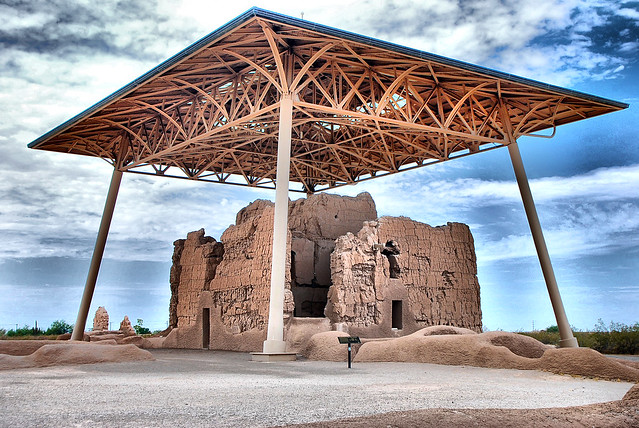Native American ruins around Arizona – Ancient Indian Ruins in Arizona
The state of Arizona has the largest percentage of Native Americans in the United States and one quarter of the state is Indian reservation land.
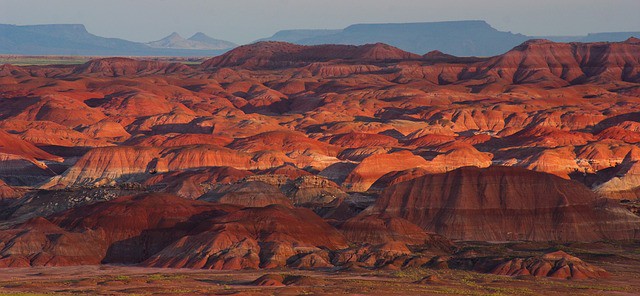
I have put together this list of the best Native American ruins to visit in Arizona, where they are located, and how much they cost to visit.
This makes it an ideal place to learn more about the culture and visit the Indian ruins in Arizona. If you are planning a visit to Arizona, you should also plan a trip to visit the Indian Ruins in Arizona.
You will find a lot of the sights on the way to the natural wonders of Arizona so you can take a chance and stop off for a quick break to visit one of these Native American ruins.
TLDR: THE Must-Visit Indian Ruin in Arizona – Montezuma Castle
If you have time for just one Indian ruin in Arizona, Montezuma Castle National Monument is the top choice. It’s not only the most popular but also one of the best-preserved cliff dwellings in North America, offering a unique window into the Sinagua civilization’s history and architectural brilliance.
Thank you for supporting this website written by an American. This post may contain affiliate links. This means I earn a small commission on these links at no extra cost to you.
To visit any of the National Parks in the USA, I recommend buying a National Park Pass. The America the Beautiful Pass is valid for one year and costs $80. Plus 10% of sale proceeds go to the National Park Foundation.
15 Incredible Indian Ruins in Arizona – Native American History in Arizona
Walnut Canyon Ruins: A Glimpse into the Sinagua Civilization
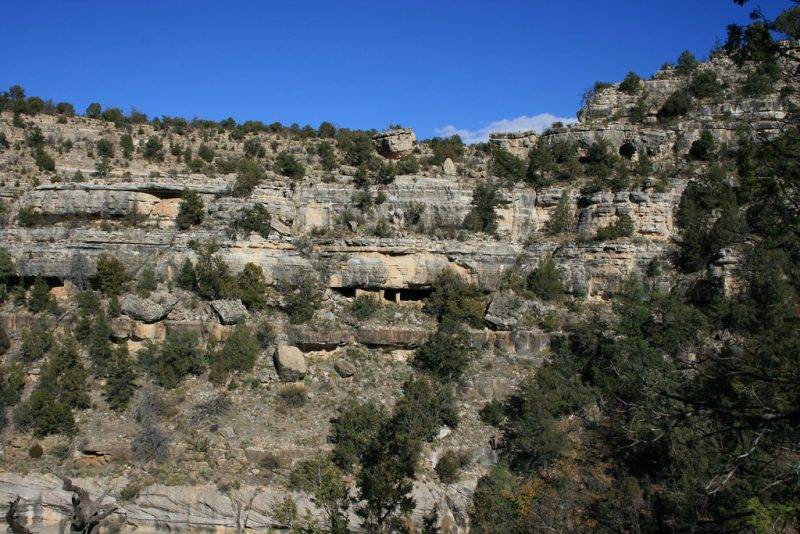
On my last visit to Walnut Canyon, near Flagstaff, I was struck by the ingenuity of the Sinagua people.
Their cliff dwellings, nestled under limestone ledges, showcase a remarkable adaptation to the arid environment.
The hike through Walnut Canyon, while moderately challenging, is a walk back in time. The well-preserved ruins, perched along the canyon walls, reveal the Sinagua’s skillful use of limited resources.
Tips: Start early to avoid the heat and crowds. The trail can be steep in places, so wear comfortable hiking shoes.
Admission: $15 per person.
Operating Hours: Open daily from 9 am to 5 pm. It’s best to check the National Park Service website for any seasonal changes in hours.
Check out my post on the Best Hikes in Arizona which includes some Indian Ruins in Arizona.
White House Ruin Trail to Canyon de Chelly National Monument
There are several different trails that lead to the Chelly National Monument but the White House Ruin Trail is the only that unaccompanied hikers can take to get there.

My journey to Canyon de Chelly’s White House Ruin was a highlight of my travels through Arizona. Descending 600 feet into the canyon, the trail leads to remarkable ancient dwellings.
The ruins, dating back to the 1070s, are a testament to the resilience of the Ancestral Puebloans. As the only trail open to unaccompanied hikers, it offers a unique opportunity to explore at your own pace.
Tips: The descent can be strenuous; carry water and snacks. Early morning hikes are cooler and less crowded.
Admission: Free.
Operating Hours: The trail is open from dawn to dusk. Visitor center hours vary, so it’s best to confirm in advance.
Wupatki National Monument: The Legacy of the Ancestral Puebloans
Wupatki, with its iconic “Tall House,” was an unforgettable stop on my exploration of Arizona’s Native American heritage.

Located near Flagstaff, this site is a blend of cultural history and natural beauty. The Tall House, a large pueblo with over 100 rooms, offers insights into the advanced societal structure of its ancient inhabitants.
Tips: The area can be quite exposed, so sunscreen and a hat are essential. The visitor center provides valuable context, so make sure to stop by.
Admission: $25 per person, which includes access to the site and its facilities.
Operating Hours: Open from 9 am to 5 pm daily.
Montezuma Castle National Monument: A Window into Sinagua Cliff Dwellings
Visiting Montezuma Castle National Monument was like stepping into a history book. This well-preserved, five-story cliff dwelling, once home to the Sinagua Indians, is over 800 years old.
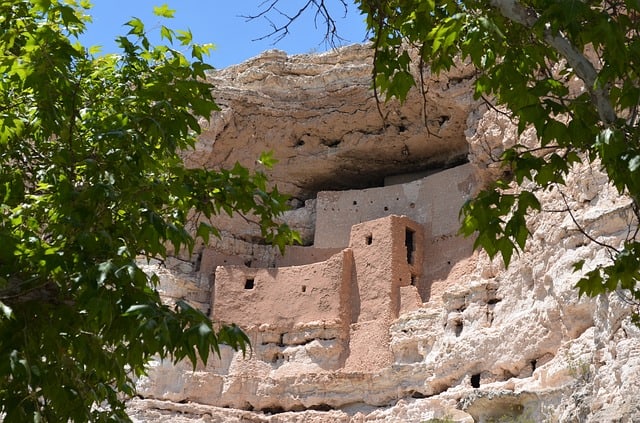
Gazing up at the structure from the loop trail below, I marveled at the ingenuity and resilience of the people who built and lived in these dwellings. Despite being subject to vandalism in recent years, Montezuma Castle remains a remarkable testament to ancient engineering.
Tips: The site is wheelchair accessible, making it a great visit for all. Photography is allowed, but drones are prohibited.
Admission: $15 per person, which also grants access to Tuzigoot National Monument within 7 days.
Operating Hours: Open daily from 8 am to 5 pm.
Tuzigoot National Monument: Exploring the Puebloan Past
Tuzigoot National Monument offers a unique perspective on the lives of the Sinagua Indians. The site features a 3-story pueblo ruin, providing a vivid glimpse into ancient community life.
Walking among the ruins, I was impressed by the scale of the settlement and the panoramic views of the surrounding valley. The visitor center’s artifacts display further enriched my understanding of the Sinagua culture.
Tips: Bring water and wear comfortable shoes. The terrain around the ruins can be uneven.
Admission: $15, which includes access to both Tuzigoot and Montezuma Castle.
Operating Hours: Open from 9 am to 5 pm.
Casa Grande Ruins National Monument: Beholding the Great House
The Casa Grande Ruins National Monument, with its impressive Great House, is a site that truly captures the essence of ancient Sonoran Desert people’s architectural prowess.
The scale and complexity of the structure, believed to have been a central gathering place, left me in awe during my visit. Learning about its discovery and historical significance provided a deeper appreciation for the ingenuity of Native American cultures.
Tips: Guided tours are available and highly recommended for a comprehensive understanding of the site.
Admission: $10 per person.
Operating Hours: Typically open from 9 am to 5 pm, but it’s best to verify on their website.
Tonto National Monument: A Salado Culture Showcase
My visit to Tonto National Monument was an immersive experience in the history of the Salado culture. These well-preserved cliff dwellings, nestled in the natural amphitheater of the Tonto Basin, are a testament to the Salado people’s architectural skill and adaptation to the environment.
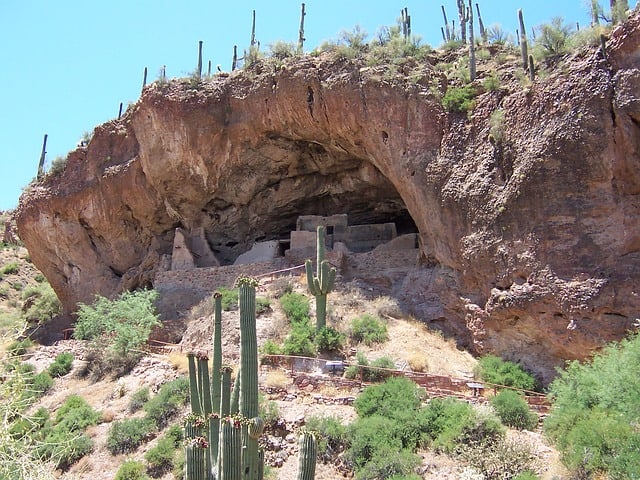
The hike up to the dwellings offers spectacular views of the surrounding Tonto National Forest, the largest of its kind in Arizona, known for its sprawling ponderosa pine forest.
As I ascended the trail, the strategic placement of the dwellings for defense and resource optimization became apparent. The interiors, still intact, give a rare peek into the everyday lives of the Salado people. The visitor center displays artifacts and provides informative exhibits that enrich your understanding of the site’s historical significance.
Tips: The trail is moderately challenging, so appropriate footwear and water are essential. Early morning visits offer cooler temperatures and softer light for photography.
Admission: $10 per person.
Operating Hours: Open from 8 am to 5 pm, but it’s advisable to check their website for any seasonal changes.
Sierra Ancha National Wilderness: A Hidden Gem of Salado Remnants
Exploring the Sierra Ancha National Wilderness, I was enthralled by its remote beauty and the secrets it holds. T
his vast wilderness, between Lake Roosevelt and Tonto Basin, is a treasure trove of Salado Indian history. Its unique cliff dwellings, although less known, are perhaps the most intriguing due to their inaccessible locations.
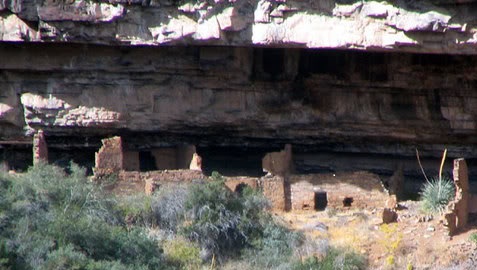
$!LENCE D0G00D
Hiking through Sierra Ancha is not for the faint-hearted. The terrain is rugged, and the dwellings are perched in challenging spots, but the effort is rewarding.
The sense of discovery and isolation you feel upon finding these hidden ruins is unparalleled. The area’s natural beauty, with its diverse flora and fauna, adds to the adventure.
Tips: This hike is best suited for experienced hikers. Ensure you have proper gear, ample water, and inform someone of your hiking plan due to the remote nature of the trail.
Admission: Free, but prepare for a self-guided wilderness experience.
Operating Hours: Accessible year-round, but best visited in cooler months. Check local ranger stations for trail conditions.
Navajo National Monument
Navajo National Monument was established in 1909 and consists of Betatakin, Keet Seel, and Inscription House.
The Navajo National Monument, established to protect three well-preserved Ancestral Puebloan cliff dwellings, was a highlight of my explorations in Arizona.
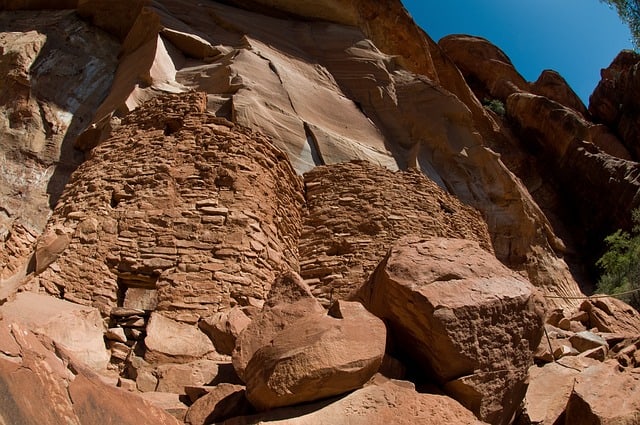
The monument’s three sites – Betatakin, Keet Seel, and Inscription House – are incredible examples of ancient dwellings built within sandstone alcoves.
During my visit, the profound sense of history was palpable. The dwellings, occupied from 1250 to 1300 AD, are among the best-preserved in the state.
Learning about the Kayenta people, who transitioned from hunter-gatherers to farmers, and seeing the evidence of their agricultural and architectural advancements was fascinating.
Tips: Guided tours are available and provide valuable insights. Wear sturdy hiking shoes and carry water, as some areas can be challenging to navigate.
Admission: $10 per person.
Operating Hours: Open from 8 am to 5 pm.
Agua Fria National Monument: A Portal to Puebloan History
Located 40 miles north of Phoenix, the Agua Fria National Monument is over 71,000-acre area.

During my exploration of the Agua Fria National Monument, I was captivated by the vast 71,000-acre landscape, a significant remnant of the Puebloan culture.
Located just 40 miles north of Phoenix, the monument is a historical haven, preserving settlements, petroglyphs, and diverse ecosystems. What fascinated me most was how the Pueblo people thrived between 1250 to 1450 in this challenging environment, leaving behind a rich archaeological legacy.
Walking through Agua Fria, I was struck by the contrast between the Sonoran desert landscapes and the grass-chaparral belts. The area’s petroglyphs, etched into the rock surfaces, are a silent testament to the ancient inhabitants’ life and beliefs. It’s a place that requires time and contemplation to truly appreciate the depth of its historical significance.
Tips: Wear comfortable hiking shoes and carry plenty of water. The best way to experience the monument is on foot, exploring its trails and hidden ruins.
Admission: Free.
Operating Hours: Accessible throughout the year, but spring and fall offer the most pleasant weather for exploration.
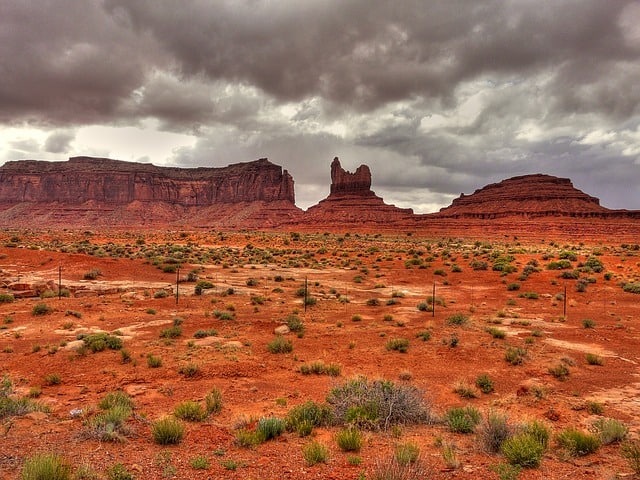
Roger’s Canyon Cave Ruin: A Hidden Treasure in the Superstition Wilderness
My journey to Roger’s Canyon Cave Ruin, nestled in the heart of the Superstition Wilderness, was one of the most memorable.
Halfway between Phoenix and Globe, this site is not only an archaeological wonder but also a hiker’s delight. The four-mile hike along Roger’s Canyon Trail to reach these well-preserved Salado cliff dwellings is as rewarding as it is challenging.
Al_HikesAZ
The dwellings, located in a large cave above the canyon floor, are remarkably intact. As I explored the site, I was amazed by the ingenuity of the Salado people, who created a thriving community in such a remote and rugged landscape. The sense of history and solitude here is profound; it’s a place that resonates with the echoes of the past.
Tips: The trail can be difficult, so it’s best suited for experienced hikers. Bring ample water, snacks, and a camera to capture the stunning views and ruins.
Admission: Free.
Operating Hours: The wilderness area is open year-round, but the best time to visit is during the cooler months. Always check the weather conditions before embarking.
Fortaleza Indian Ruins: A Glimpse into the Hohokam Civilization
Visiting the Fortaleza Ruins, located around 40 miles southwest of Phoenix, was like stepping into a forgotten chapter of the Hohokam civilization.
Perched on a hilltop, these ruins offer not only historical significance but also panoramic views of the Gila River valley. Fortaleza, which translates to “Fort on a Hilltop,” reflects the strategic planning of the Hohokam, who occupied this site between 1200 AD and 1450.
As I walked around the site, I was intrigued by its layout and the remnants of what must have been a bustling community. Today, it stands as a sacred site for the Tohono O’odham Nation, adding a layer of cultural reverence to my visit. The experience here is more than just viewing ruins; it’s about connecting with the deep spiritual legacy of the land.
Tips: Respect the site’s cultural sensitivity. Carry water, and wear sun protection as the area can be quite exposed.
Admission: Free.
Operating Hours: The site is accessible year-round, but it’s best to visit during cooler months for a comfortable experience. Check local guidelines for access and restrictions.
The best Ancient Indian Ruins in Arizona
That’s my list of the best ancient Indian Ruins in Arizona. Have you visited any of these on the list?
Every time I revisited Arizona I like to make a stop to a new place so I will to the list as I visit new places.
Recent Posts
Discover the Top 19 Unforgettable Day Trips Just Hours from Vegas! Are you looking for day trips from Vegas? Whether you are looking to get away from the strip or are using Vegas as a base...
Vegas Fine Dining: A Tour of 15 Exquisite Upscale Dining Destinations Welcome to the ultimate guide to upscale dining in Las Vegas! Whether you're a seasoned foodie or simply seeking a taste of...

